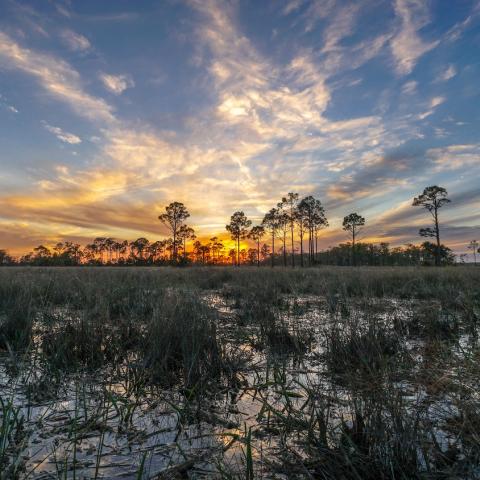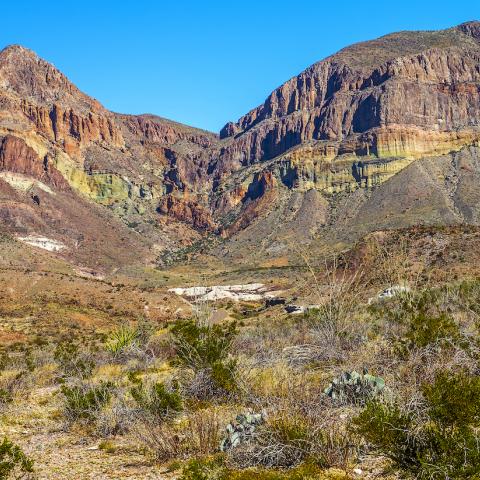
Drought conditions are causing water problems for Big Bend National Park/Rebecca Latson file
Spring-break crowds, drought conditions, and a poor water source recently created quite the problem at Big Bend National Park in Texas, a problem that required the Big Bend Conservancy to bail out the National Park Service.
"Due to a significant water line leak and ongoing drought conditions, Big Bend National Park temporarily closed the public-facing flush toilets in the Chisos Basin during the month of March," park staff told the Traveler on Tuesday. "The entire water supply for the Chisos Basin comes from one small spring. With the already limited water supply and a leak in the line, the system was unable to satisfy the great demand during the Big Bend Spring Break rush (campgrounds, lodge, restaurant, etc.)."
With no flush toilets, visitors might have been up the proverbial creek, but the Big Bend Conservancy stepped up and paid for temporary toilet facilities for the month. There was no immediate word on why the Park Service was unable to order the temporary toilets, though the agency reportedly has been limited by the Trump administration to credit card charges of $1 or less, and higher purchases need approval from Washington.
For now, the end of spring break has reduced park visitation and allowed the flush restrooms to reopen. This summer a new water line replacement project is expected to begin.
Water issues have plagued Big Bend for a number of years. Driving the issue is the pipeline that draws water from Oak Spring and pumps it uphill roughly 2.5 miles to the Chisos Basin and the lodge there. The line is near the end of its life, and park officials need to consider the best approach to replacing it; do they simply install a new pipeline, or search for a new water source and pipe it in from there?
Two years ago the Traveler was told that due to the exhorbitant cost of finding a new water source and building a new pipeline (estimated at $70 million-$100 million), the Park Service was hoping that fixing the leaks and increasing storage from 500,000 gallons to 1 million gallons would extend the spring's life 10-20 more years. However, climate change could complicate that, as a Park Service Climate Change Response Program report has made clear that precipitation is a key driver of Oak Spring, pointing out that the spring's "flows correlate with monthly precipitation falling in the local area, with a two-month lag time, where precipitation explained 58 percent of the variation in spring flow."
It's been calculated that a spring flow of 20 gallons per minute is sufficient to meet the needs in the Chisos Basin. Using that number as a threshhold, the Park Service's Fort Collins climate change team predicted that, under the "best case scenario" of a warming world and precipitation models, Oak Spring in the 2060s will continue to produce water at the same rate as it did during the 1950-2000 historical period.
However, under a "hot dry scenario" — reduced precipitation, increased temperatures — the spring's production will fall significantly, failing to reach 20 gpm in the 2060s twice as often as it did during the 1950-2000 period.




 Support Essential Coverage of Essential Places
Support Essential Coverage of Essential Places






